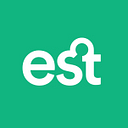How to Review OKRs
The end of the quarter has finally arrived, so after weeks of backbreaking, tendonitis-exaggerating effort, you blow the cobwebs off your OKRs, you adjust the height of your standing desk, and you prepare to review them.
Here’s how to do it right.
Score, don’t grade
This isn’t school; it’s real life, and real life doesn’t have grades.
Your only focus when scoring should be to inspire self-improving introspection and to catalyze valuable conversations with your colleagues.
Therefore, do not spend hours building an elaborate spreadsheet model used only to measure your performance on a Key Result you will never look at again. You probably defined your Key Results with false measurability anyway — like “50% progress toward making a new best friend.” Reviewing OKRs should occur at a high level, and high-level changes should not need exacting detail.
Along the same lines, do not expend painstaking hours composing a lengthy explanation or justification of the scores you invent. I promise the teacher will not change her mind about excluding you from the honor roll that one time in fifth grade. OKR review occurs far too infrequently to serve as a valuable means of status update or performance management, which are the needs that might merit such a deep-dive into your state of affairs.
Instead, use your existing awareness and business-as-usual metrics to quickly and efficiently take a SWAG (an educated guess) at a score for each of your Key Results. Use a scale of 0.0 through 1.0, with only one decimal of precision. Then, for each Objective, calculate the simple average of the associated KR’s.
Invest the rest of your energy into the forward-looking exercise I describe below.
Leverage the opportunity to maximize future productivity
“Life can only be understood backwards; but it must be lived forwards.”
― Søren Kierkegaard
Your OKR review should strive to produce a comprehensive extraction of all the actionable lessons that your team and you will employ for greater performance in the future.
Start with a blank page and copy over each of your Objectives and their scores. However, do not copy over the Key Results or their scores, which would create more clutter than clarity. See the Case Study section for an example.
Then, create three bullets below each Objective and introspect about the lessons you can extract in each of the following three areas.
1. Your involvement
Did you allocate sufficient time to this Objective? Did you have the skills and expertise needed to do your part? Did you utilize effective tactics? Did you have sufficient financial resources? Did you execute good judgment?
2. Dependencies’ involvement
Did other teams contribute the time you needed from them? Did they have the right skills and resources? Did they work effectively with each other? Did you collaborate optimally with them? Did they execute good judgment?
3. Relevance of the objective
Did this Objective and its Key Results stay relevant? Did they remain a priority? Does quarterly planning make sense in your environment, or should you consider an alternative such as monthly planning? Do you have sufficient visibility into your organization’s higher-level goals and strategy? Does such a set of higher-level goals and strategy even exist, or does your organization suffer from bullwhip (compounding overreactions to changes in supply and demand)?
Case study
Here’s an example OKR Review that illustrates successful application of this proposed format.
Tips
- Use the questions above only to inspire your thinking; neither limiting yourself to them, nor feeling compelled to address all of them.
- For each lesson you extract, provide a specific illustrative example from the prior period.
- Distill, distill, distill. Brevity will ensure that everyone actually reads and reacts to your suggestions.
Daniel leads Product Management at Earnest. Prior, he was a Product Manager at Google and an alumnus of their Associate Product Manager program. Daniel holds a bachelor’s degree in Computer Science from Harvard University and loves flying airplanes.
Earnest is a San Francisco-based technology company building a modern bank for the next generation. Our Product Management team is a nascent group of technical, entrepreneurial, jacks and jills of all trades, and we are actively hiring!

